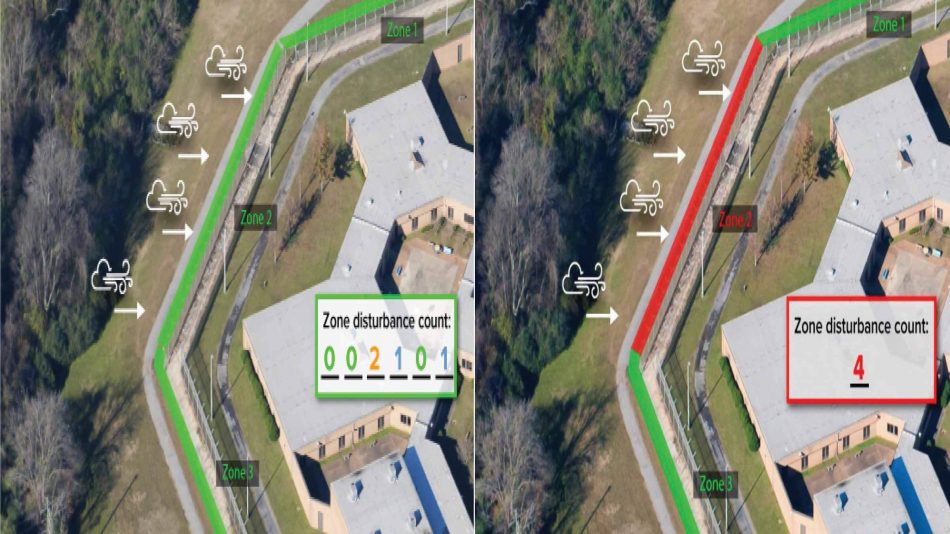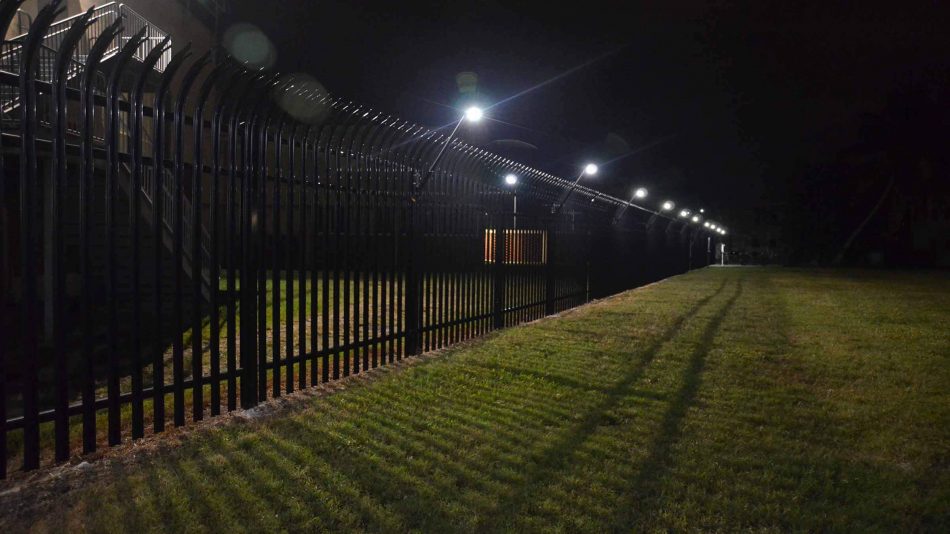What Is “Environmental Disaggregation” And Why Should You Care?

“Environmental disaggregation” sounds complicated but in the physical security world of perimeter intrusion detection sensors, it has a straightforward and significant meaning.
Basically put, environmental disaggregation is the unique ability of a fence-mounted sensor with ranging (i.e. locating) capability to avoid the generation of nuisance alarms caused by heavy winds. Heavy winds can create vibrations unevenly across the fence fabric within a zone, which, depending on the system, may appear as an intrusion attempt and trigger an alarm.
Block Sensor Under Heavy Wind Conditions
First, let’s look at a block sensor, in which an entire segment of sensor cable generates a zone alarm, with no distinction as to the location within the zone. During a storm, wind gusts generate vibrations on the fence at several locations within the zone. The intrusion detection sensor, seeing multiple disturbance events, generates an alarm. While these systems can use Environmentally Derived Adaptive Technology (EDAPT) to reduce the likelihood of nuisance alarms by analyzing distributed weather effects, nuisance alarms may still be generated under the right conditions.
Ranging Sensor Under Heavy Wind Conditions
With the FlexZone or FiberPatrol fence-mounted ranging sensors, disturbances are reported by location, typically within 1 to 4 m (1 to 13 ft). With the Senstar LM100 hybrid perimeter intrusion detection and intelligent lighting system, distance is measured to the closest luminaire. This means instead of treating wind gusts as an additive force across the entire detection segment, the individual disturbances are analyzed based on location and inter-event proximity, thus disaggregating the cumulative environmental effects.

